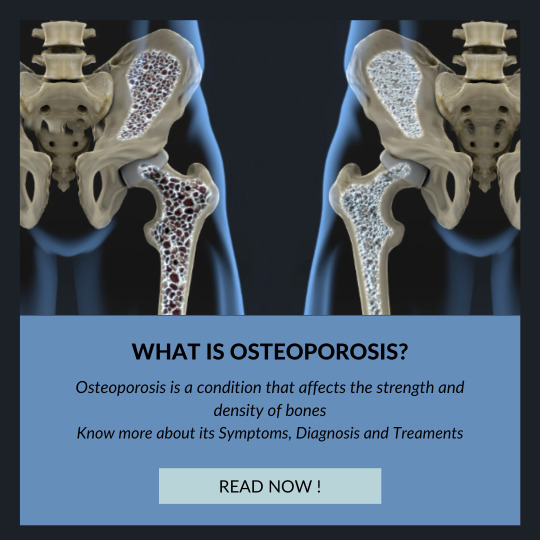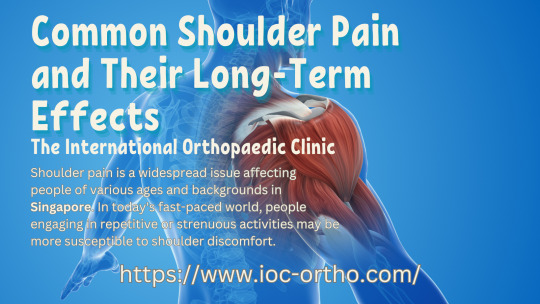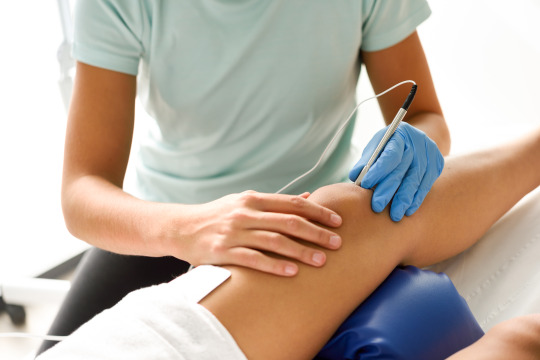#Orthopedic surgery
Text
TRYING TO TELL ADMIN WE’RE UNDERSTAFFED AND IT’S CREATING AN UNSAFE ENVIRONMENT FOR PATIENTS

#pablr#pa school#physician assistant#pa-s#emergency medicine#pa-c#medicine#medblr#surgery#nurblr#internal medicine#ob/gyn#orthopedic surgery#wish i was kidding#south park#officer barbrady
40 notes
·
View notes
Text
6 notes
·
View notes
Text
What is Osteoporosis?
Osteoporosis is a condition that affects the strength and density of bones, leading to increased fragility and susceptibility to fractures. It is a common condition and Osteoporotic fractures affect around 10 million Indians each year, with women being more susceptible than men. This article aims to provide an in-depth understanding of Osteoporosis, including its causes, symptoms, and treatment options.

Osteoporosis is caused by a combination of factors, including genetics, lifestyle, and hormonal changes.
Some of the most common causes of Osteoporosis include:
Hormonal Changes: As we age, our bodies undergo hormonal changes that can affect bone health. Women, in particular, are at an increased risk of Osteoporosis due to the drop in estrogen levels after menopause.
Genetics: Family history plays a role in Osteoporosis, and those with a family history of the condition are more likely to develop it themselves.
Lifestyle Factors: Lifestyle factors such as smoking, excessive alcohol consumption, a sedentary lifestyle, and a poor diet can all contribute to the development of Osteoporosis.
Medical Conditions: Certain medical conditions, such as thyroid disorders, inflammatory bowel disease, and chronic kidney disease, can also increase the risk of Osteoporosis.
Prevention of Osteoporosis
There are several steps that people can take to reduce their risk of developing Osteoporosis, including:
Eating a healthy diet: A diet rich in calcium and vitamin D can help strengthen bones and reduce the risk of Osteoporosis.
Exercising regularly: Weight-bearing exercises, such as walking and running, can help to strengthen bones and reduce the risk of Osteoporosis.
Quitting smoking: Smoking can contribute to the development of Osteoporosis, so quitting smoking is an essential step in prevention.
Limiting alcohol consumption: Excessive alcohol consumption can weaken bones and increase the risk of Osteoporosis.
Osteoporosis is a severe condition that can cause significant damage to bone health. However, it is possible to prevent and manage Osteoporosis by understanding its causes, symptoms, and treatment options.
At Sarvesh Health City, we offer comprehensive care for people with Osteoporosis. Our healthcare professional team includes Orthopedics, Orthopedic surgery, and Physical Therapy Specialists.
If you are concerned about your bone health, we recommend scheduling an appointment with one of our specialists. We can help you understand your risk of developing Osteoporosis and create a plan to keep your bones healthy and strong. With the proper care and support, people with Osteoporosis can enjoy an active and healthy life free from the risks and complications of this condition.
2 notes
·
View notes
Text
Balaji Hospital | Pediatric Care for Children's Health Needs
Balaji Hospital's pediatrician team offers healthcare services including vaccinations, developmental screenings chronic disease management & preventive care

#Pediatrician#Spinal cord injury#Children with spine and limb deformities#Orthopedic Surgery#Chest Physician#Diseases related to hormones#Endocrinologist#Infectious diseases#Vadodara#Gujarat#India
0 notes
Text
Rehabilitation Resurgence: Unlocking the Best Orthopedic Rehab Centre in Hyderabad
In the bustling cityscape of Hyderabad, where every corner boasts innovation and progress, the quest for top-notch healthcare facilities remains paramount. Amidst the myriad of medical institutions, there shines a beacon of hope for those in need of orthopedic rehabilitation – the Wellknox Rehabilitation Centre. Situated in the heart of Hyderabad, Wellknox stands tall as the epitome of excellence in the realm of medical rehabilitation.
A Haven for Healing: Wellknox Rehabilitation Centre
Nestled amidst the vibrant streets of Hyderabad, Wellknox Rehabilitation Centre emerges as a haven for individuals seeking unparalleled orthopedic rehabilitation services. Boasting state-of-the-art facilities and a team of dedicated healthcare professionals, Wellknox embodies the ethos of compassionate care and holistic healing.
Unveiling the Best Orthopedic Rehab Centre in Hyderabad
In the quest for the best orthopedic rehabilitation center in Hyderabad, Wellknox reigns supreme. With a focus on personalized care and evidence-based practices, Wellknox stands at the forefront of orthopedic rehabilitation, catering to a diverse array of patient needs with utmost precision and efficacy.
Comprehensive Orthopedic Rehabilitation Services
At Wellknox, excellence is not just a standard but a way of life. The center offers a comprehensive range of orthopedic rehabilitation services, encompassing everything from post-operative care to injury rehabilitation. With a multidisciplinary approach that integrates physiotherapy, occupational therapy, and advanced medical interventions, Wellknox ensures that every patient receives the highest standard of care tailored to their unique needs.
Beyond Orthopedics: A Holistic Approach to Rehabilitation
While orthopedic rehabilitation remains the cornerstone of Wellknox's services, the center goes above and beyond in its commitment to holistic healing. Recognizing the interconnectedness of physical, emotional, and psychological well-being, Wellknox offers a range of rehabilitation programs catering to diverse medical conditions. From neuro-rehabilitation to cardiac and pulmonary rehabilitation, Wellknox extends its healing touch to individuals facing a myriad of health challenges.
The Wellknox Difference: Excellence Personified
What sets Wellknox apart from the rest is not just its cutting-edge facilities or advanced treatment modalities but its unwavering commitment to patient-centric care. Every member of the Wellknox team is driven by a shared passion for healing and a dedication to restoring hope and mobility to those in need. From the moment a patient walks through the doors of Wellknox, they are greeted with warmth, compassion, and the assurance that they are in the best hands possible.
Experience Excellence at Wellknox Rehabilitation Centre
In the ever-evolving landscape of healthcare, finding a reliable and reputable rehabilitation center can be a daunting task. However, amidst the myriad of options, Wellknox Rehabilitation Centre stands out as a beacon of excellence, offering unparalleled orthopedic rehabilitation services in the heart of Hyderabad. With a commitment to personalized care, state-of-the-art facilities, and a multidisciplinary approach to healing, Wellknox is not just a rehabilitation center – it's a sanctuary for those seeking restoration, renewal, and a path to wellness.
Wellknox Rehabilitation Centre is more than just a medical facility; it's a promise of hope, healing, and holistic care. Whether you're recovering from orthopedic surgery, managing a chronic condition, or seeking to regain mobility and independence, Wellknox is here to support you every step of the way. Welcome to a world where excellence knows no bounds – welcome to Wellknox Rehabilitation Centre.
Wellknox Rehabilitation Centre
8-2-608, Plot No: 8-2-608, Road No. 10, behind Ofen Bakery, Banjara Hills, Hyderabad, Telangana 500034
9133560111
#best rehabilitation center in hyderabad#rehabilitation centre#rehabilitation#cancer rehabilitation center#nutrition#orthopedic surgery#best orthopedic rehabilitation center
0 notes
Text

Physiotherapy role in orthopedic surgery
Preoperative Preparation: Before surgery, physiotherapy focuses on evaluating baseline function, identifying modifiable risks, and designing personalized exercise regimens to improve conditioning and expedite recovery. Education sessions also prepare patients for surgery, potential complications, and realistic expectations, empowering them with informed decision-making.
Immediate Postoperative Care: Physiotherapy immediately after surgery emphasizes pain management, swelling reduction, and early mobilization to prevent complications like deep vein thrombosis. Techniques like cryotherapy and early mobilization protocols help manage pain, reduce inflammation, and promote joint mobility, preventing muscle atrophy.
Progressive Rehabilitation: Physiotherapy gradually increases its role post-surgery to aid in functional recovery, neuromuscular control, and overall capacity. Tailored exercise programs, including resistance training and balance exercises, target specific impairments and promote tissue remodeling for a gradual return to pre-injury levels of activity.
Joint Mobilization and Manual Therapy: Physiotherapists utilize manual therapy techniques such as joint mobilization and soft tissue mobilization to address soft tissue restrictions and joint stiffness. These techniques restore joint mobility, alleviate pain, and are complemented by patient education on self-management strategies and home exercises for long-term recovery.
Pain Management Strategies: Physiotherapists adopt a multimodal approach to pain management, integrating pharmacological and non-pharmacological interventions like TENS and acupuncture to modulate pain perception and promote relaxation. Patient education on pain neuroscience and coping strategies empowers individuals to self-regulate pain and engage effectively in rehabilitation activities.
Education and Support: Physiotherapy provides education on injury mechanisms, rehabilitation principles, and psychosocial support to empower patients in making informed decisions and overcoming fears surrounding recovery. Through motivational interviewing and cognitive-behavioral strategies, patients build resilience and adaptive coping mechanisms for a positive rehabilitation experience.
Functional Reintegration: Physiotherapy aims to reintegrate patients into their desired roles and activities by addressing specific functional deficits and occupational demands. Collaborative rehabilitation plans align with patient goals, ensuring a return to functional independence and a fulfilling post-operative lifestyle.
Rehabilitation following an orthopedic surgery includes physiotherapy exercises and regular health checkups to assess the health of the patient after surgery. You can opt to undergo an orthopedic surgery followed by a regular full body health checkup at Saifee Hospital Mumbai, which is considered to be one of India's best hospitals.
#orthopedic surgery#physiotherapy#physical therapy#joint pain#joint mobility#joint inflammation#joint swelling#manual therapy#joint mobilization#TENS#full body health checkup#regular health checkups#health checkup packages#rehabilitation
0 notes
Text
Understanding Chronic Shoulder Pain

Shoulder pain is a widespread issue affecting people of various ages and backgrounds in Singapore. In today's fast-paced world, people engaging in repetitive or strenuous activities may be more susceptible to shoulder discomfort. Occupations that involve repetitive overhead movements, such as those in construction or sports, can contribute to the development of shoulder pain. Additionally, the ageing process may bring about wear and tear on the joints, increasing the risk of shoulder-related problems. This discomfort can vary widely in its nature and duration, creating a need to distinguish between acute and chronic shoulder pain.
Difference Between Acute and Chronic Shoulder Pain
Acute shoulder pain typically arises suddenly and is often associated with a specific incident or injury. This type of pain can result from trauma, such as a fall or sudden impact, causing immediate discomfort and restricted mobility. Acute shoulder injuries may involve sprains, strains, dislocations, or fractures.
Chronic shoulder pain, on the other hand, persists over an extended period, ranging from weeks to months or even years. Unlike acute pain, chronic shoulder discomfort may not have a clear, singular cause and can be influenced by various factors, such as repetitive stress, overuse, or underlying medical conditions.
Common Injuries Contributing to Shoulder Pain
A. Rotator Cuff Injuries
The rotator cuff is a group of muscles and tendons that surround the shoulder joint, providing stability and enabling a wide range of motion. Composing the supraspinatus, infraspinatus, teres minor, and subscapularis muscles, the rotator cuff plays a pivotal role in lifting, rotating, and moving the arm.
Causes
Rotator cuff injuries can arise from various factors, with the most common being:
Trauma: A sudden impact or force on the shoulder, such as a fall or collision.
Overuse: Repetitive overhead motions or excessive strain on the shoulder, common in activities like pitching, swimming, or weightlifting.
Age-related degeneration: Gradual wear and tear of the tendons due to ageing, making them more susceptible to injuries.
Symptoms
Pain: Persistent pain, particularly when lifting or rotating the arm.
Weakness: Difficulty in lifting or holding objects, indicating muscle weakness.
Limited Range of Motion: Reduced ability to move the arm freely, especially overhead.
Crepitus: A crackling or popping sensation during shoulder movement.
Sleep Disturbances: Discomfort that may disrupt sleep, especially when lying on the affected shoulder.
B. Frozen Shoulder (adhesive capsulitis)
Frozen shoulder, clinically known as adhesive capsulitis, is a condition characterised by the gradual onset of pain and stiffness in the shoulder joint. This disorder primarily affects the capsule, a connective tissue surrounding the shoulder joint, leading to inflammation and the formation of adhesions. This results in restricted movement and persistent pain, impacting daily activities.
Factors Leading to Frozen Shoulders
Inflammatory Response: The exact cause of frozen shoulders is not always clear, but inflammation within the shoulder joint is a common trigger. This inflammation can result from various factors, including trauma, surgery, or systemic conditions such as diabetes.
Immobility or Lack of Use: Prolonged immobility or limited use of the shoulder joint, often due to injury, surgery, or prolonged periods of inactivity, can contribute to the development of adhesive capsulitis.
Systemic Diseases: Certain medical conditions, such as diabetes, autoimmune diseases, or cardiovascular disorders, have been linked to an increased risk of developing frozen shoulders.
Age and Gender: People between the ages of 40 and 60, and women more frequently than men, are more susceptible to developing frozen shoulders.
Previous Shoulder Trauma: Any history of shoulder injury, surgery, or trauma can increase the risk of developing adhesive capsulitis.
C. Shoulder Impingement Syndrome
Shoulder impingement syndrome is a common orthopaedic condition that occurs when the tendons of the rotator cuff muscles become compressed or irritated as they pass through the subacromial space. This space is located beneath the acromion, the bony prominence of the shoulder blade. The impingement typically occurs during shoulder movements, leading to irritation, inflammation, and discomfort.
Activities and Conditions Contributing to Impingement
Overhead Activities: Repetitive overhead activities, such as reaching, lifting, or throwing, can contribute to impingement syndrome. Athletes involved in sports like swimming, baseball, or weightlifting may be particularly susceptible.
Poor Posture: Maintaining poor posture, especially with rounded shoulders or a forward head position, alters the alignment of the shoulder joint. This misalignment increases the risk of impingement during routine movements.
Muscle Imbalances: Weakness or imbalance in the muscles surrounding the shoulder, especially the rotator cuff muscles, can lead to abnormal joint mechanics and impingement.
Bone Spurs: Over time, the development of bone spurs on the acromion can reduce the available space for the rotator cuff tendons, contributing to impingement.
Trauma or Injury: Previous shoulder injuries or trauma, such as dislocations or fractures, can alter the joint's anatomy and contribute to impingement.
Ageing: As people age, natural wear and tear on the shoulder joint can lead to changes in the structures, increasing the risk of impingement.
D. Labral tears
The labrum is a ring of cartilage that surrounds the socket of the shoulder joint, enhancing its stability and providing support for the shoulder's range of motion. It acts as a cushion and helps keep the humeral head securely within the socket during movements.
Causes and consequences of labral tears
Trauma: Acute injuries, such as dislocations or heavy falls on the outstretched arm, can cause labral tears. Trauma-related labral tears are often seen in athletes involved in contact sports.
Repetitive Overuse: Continuous overhead activities, common in sports like baseball, swimming, or weightlifting, can lead to gradual wear and tear of the labrum, eventually resulting in tears.
Anatomical Variations: Some people may have structural abnormalities in the shoulder joint, making them more susceptible to labral tears.
Age-Related Changes: Over time, the labrum may degenerate as part of the natural ageing process, making it more prone to tears.
Instability: People with shoulder instability, where the joint is overly loose, are at an increased risk of labral tears.
Conclusion
Common injuries leading to chronic shoulder pain encompass rotator cuff injuries, frozen shoulder (adhesive capsulitis), shoulder impingement syndrome, and labral tears. These conditions can arise from a combination of factors, such as traumatic incidents, overuse, and underlying anatomical issues. Recognising the distinctive characteristics of each injury is crucial for accurate diagnosis and tailored treatment. Encouraging people experiencing shoulder pain in Singapore to seek timely medical attention is vital for early diagnosis and intervention. Timely care can prevent the progression of acute injuries into chronic conditions, preserving shoulder function and minimising long-term discomfort.
1 note
·
View note
Text
Belly Button Exercises for Hernias Yes, Please! Gentle Moves to Strengthen Your Core and Minimize Bu
#health #herniarepair #hernia #surgery #medicalstudents #medicalprofessionals #DrAtefAhmed
#MedicalMystery #DoctorReacts #MentalHealthAwareness #ChronicIllness #HealthTips #Wellbeing #FitnessMotivation #MedicalSchool #Nutrition #HealthyLifestyle #DiseasePrevention #FirstAid #Anatomy #Healthcare #MedicalTechnology #PatientStories #DoctorLife #MedStudent
Atef’s Notes In Hernia for Medical…

View On WordPress
#AI in medicine#anxiety#cardiac surgery#clinical rotations#diabetes#endoscopy#gastrointestinal medicine#healthcare technology#hernia#infectious diseases#laparoscopy#medical ethics#medical school tips#medical specialties#minimally invasive surgery#neurology#Neurosurgery#oncology#orthopedic surgery#palliative care#patient communication#physician burnout#psychiatry#Public health#residency application#robotic surgery#schizophrenia#telemedicine#usmle prep
0 notes
Text
Arthroscopy: Everything You Need to Know

Arthroscopy, a minimally invasive surgical technique, has revolutionized how we diagnose and treat joint problems. Gone are the days of large incisions and lengthy recoveries; this high-tech procedure allows surgeons to peek inside a joint, perform delicate repairs, and get you back on your feet faster than ever before. But what exactly is arthroscopy, and how does it work? This comprehensive guide will answer all your questions and give you a clear understanding of this game-changing procedure.
What is Arthroscopy?
Arthroscopy, a surgical technique, has revolutionized the way we diagnose and treat joint problems. Imagine a tiny camera and surgical tools entering your joint through pin-sized incisions, allowing surgeons to visualize and repair internal structures with precision. This is the magic of arthroscopy, a procedure that has transformed the landscape of orthopedic surgery.
How Arthroscopy Works? Technique and Procedures
Arthroscopy utilizes a specialized arthroscope, a slender instrument equipped with a miniature camera and light source. This camera transmits live images of the joint interior onto a high-resolution monitor, guiding the surgeon's movements with unparalleled precision. Through additional tiny incisions, miniaturized instruments are inserted, allowing for diagnostic procedures like biopsies and therapeutic interventions like tissue repair or cartilage removal.
Advantages of Arthroscopy Over Traditional Surgery:
Compared to traditional open surgery, arthroscopy offers a multitude of benefits:
Minimally invasive: Small incisions reduce pain, scarring, and risk of infection.
Faster recovery: Less tissue disruption leads to quicker healing and earlier return to activity.
Reduced hospital stay: Outpatient procedures often eliminate the need for overnight hospitalization.
Improved visualization: Arthroscopic cameras provide magnified views of joint structures, enhancing diagnosis and surgical accuracy.
Less blood loss: Minimal tissue manipulation translates to less bleeding during and after surgery.
Common Types of Arthroscopy:
The versatility of arthroscopy extends to various joints, with knee and shoulder arthroscopy leading the way.
A. Knee Arthroscopy:
Conditions Treated: Meniscus tears, ligament injuries, cartilage damage, patellofemoral pain syndrome, joint instability.
Procedure Overview: Arthroscopic instruments are used to repair or remove damaged meniscus tissue, reconstruct ligaments, smooth cartilage irregularities, realign the kneecap, and stabilize the joint.
“Knee Replacement Surgery is a surgical procedure that involves replacing a damaged or worn-out knee joint with an artificial joint. A procedure that helps in relieving pain and functionality of a deceased knee joint.” says Dr. Priyank Gupta from HCG Hospitals.
B. Shoulder Arthroscopy:
Conditions Addressed: Rotator cuff tears, labral tears, shoulder instability, impingement syndrome, frozen shoulder.
Surgical Process: Arthroscopic tools facilitate repair or reattachment of torn rotator cuff tendons, trimming of labral tears, capsular tightening for stability, and removal of bone spurs causing impingement.
Procedure Details of Arthroscopy:
Before Arthroscopy:
Consultation and Diagnosis: Your doctor will discuss your symptoms, medical history, and perform necessary examinations to diagnose the joint issue and determine if arthroscopy is the right treatment.
Anesthesia: You'll receive general, regional, or local anesthesia to numb the area and ensure comfort during the procedure.
Preparation: The area around the joint is shaved and prepped with sterile solution.
During Arthroscopy:
Incisions: Your surgeon makes small incisions (about the size of a buttonhole) around the joint.
Arthroscope Insertion: A thin tube with a camera and light source (arthroscope) is inserted into one incision, providing a magnified view of the joint on a monitor.
Treatment: Depending on the issue, your surgeon may perform various procedures like repairing cartilage tears, removing inflamed tissues, or reconstructing ligaments using specialized instruments inserted through other incisions.
After Arthroscopy:
Recovery: You'll likely stay in the hospital for a few hours or overnight for observation.
Pain Management: You'll receive medication to manage pain and inflammation.
Rehabilitation: Physical therapy exercises are crucial to regain strength and flexibility in the joint.
Benefits and Risks of Arthroscopy:
While arthroscopy boasts significant advantages, it's essential to consider potential risks:
Benefits of arthroscopy:
Faster recovery and reduced pain.
Lower risk of infection and complications.
Minimized scarring and tissue disruption.
Early return to work and activities.
Risks of arthroscopy:
Potential for incomplete repair requiring additional surgery.
Infection, although rare.
Nerve or blood vessel injury, uncommon but possible.
Is Arthroscopic Surgery Right for You? Factors to Consider
Arthroscopic surgery is not suitable for everyone and depends on various factors, such as:
The type and severity of the joint problem
The age and health condition of the patient
The goals and expectations of the patient
The alternatives and options available for the patient
To decide on arthroscopic surgery, the patient should consult with a doctor who specializes in arthroscopic surgery and discuss the following aspects:
The diagnosis and prognosis of the joint problem
The benefits and risks of arthroscopic surgery
The preparation and procedure of arthroscopic surgery
The recovery and rehabilitation of arthroscopic surgery
The cost and insurance coverage of arthroscopic surgery
Conclusion
Arthroscopy has revolutionized joint surgery, offering a minimally invasive and effective approach to diagnosing and treating various conditions. With continuous advancements in technology and techniques, the future of arthroscopy is brimming with possibilities for faster, safer, and more personalized joint care. Remember, informed decision-making is key. Consult your doctor, discuss your options, and choose the best path to reclaim your joint health and regain your mobility.
#arthroscopy#orthopedic surgery#knee arthroscopy#shoulder arthroscopy#arthroscopic technique#knee cartilage treatment#frozen shoulder treatment
0 notes
Text
WHEN THE HOSPITAL SERVER CRASHES AND WE HAVE A WEEK OF PAPER CHARTING

#pablr#pa school#physician assistant#clinical year#emergency medicine#grad school#pa-c#medicine#surgery#medblr#nurblr#college#internal medicine#ob/gyn#orthopedic surgery#downtime#dumpster fire#my everything hurts#everything’s fine
11 notes
·
View notes
Text
Another surgery looms
I had my first surgery as a teenager. Now I am going back under the knife for a whole mess of issues on my spine. One is the consequence of having titanium rods fused to my spine for so long that my remaining “good” portion took a beating and deteriorated. The other is spinal stenosis which my mother also had. The list of procedures include: sawing a few inches of my current rods, a laminectomy,…

View On WordPress
2 notes
·
View notes
Text
Reclaiming Mobility: Exploring Orthopedic Surgery with Dr. Saanjay J. – The Best Orthopedic Surgeon in Kharar.
Orthopedic surgery is a medical specialty that plays a vital role in helping individuals regain their mobility and improve their quality of life. When it comes to orthopedic surgery in Kharar, Dr. Saanjay J. stands out as the best orthopedic surgeon, offering expertise and care that truly transforms lives. In this blog, we will delve into the world of orthopedic surgery and explore the exceptional services provided by Dr. Saanjay J. in Kharar.
Understanding Orthopedic Surgery:
Orthopedic surgery encompasses a wide range of procedures aimed at diagnosing and treating conditions that affect the musculoskeletal system. This includes bones, joints, ligaments, muscles, and tendons. Common orthopedic issues that may require surgical intervention include joint replacement surgeries, spinal surgeries, sports injuries, fractures, and more.
The Role of Dr. Saanjay J.:
Dr. Saanjay J. is a distinguished name in the field of orthopedic surgery, particularly in Kharar. With years of experience and a track record of successful surgeries, he has earned a reputation as the best orthopedic surgeon in the region. His expertise extends to various orthopedic subspecialties, including joint replacement, spine surgery, sports medicine, and trauma care.
Orthopedic Surgery Services:
Joint Replacement: Dr. Saanjay J. specializes in joint replacement surgeries, such as hip and knee replacements. These procedures are life-changing for individuals suffering from chronic joint pain and arthritis.
Spine Surgery: Back pain and spine-related issues can significantly impact one's daily life. Dr. Saanjay J. offers advanced spine surgery techniques to alleviate pain and restore function.
Sports Medicine: Athletes often require specialized orthopedic care for sports-related injuries. Dr. Saanjay J. provides comprehensive sports medicine services, ensuring a swift and effective recovery.
Fracture Care: Orthopedic trauma, including fractures, is expertly managed by Dr. Saanjay J. He ensures that patients receive prompt and appropriate care to promote healing and prevent complications.
Patient-Centered Approach:
What sets Dr. Saanjay J. apart is his patient-centered approach. He believes in personalized care, taking the time to understand each patient's unique condition, concerns, and goals. This approach allows him to tailor treatment plans that best suit the individual's needs, ultimately leading to better outcomes and patient satisfaction.
Conclusion:
Orthopedic surgery, under the expertise of Dr. Saanjay J., can be life-changing for those suffering from musculoskeletal issues. His commitment to delivering the best orthopedic care in Kharar is reflected in his numerous success stories and satisfied patients. If you're considering orthopedic surgery, consult with Dr. Saanjay J. to embark on your journey towards improved mobility and a better quality of life. Remember, you're in the hands of the best orthopedic surgeon in Kharar.
0 notes
Text
Balaji Hospital |Orthopedic Surgery for Bone & Joint Conditions
Balaji Hospital's Orthopedic Surgery showcases a specialized team of surgeons offering advanced solutions for bone & joint conditions including joint replacement

#Children with spine and limb deformities#Orthopedic Surgery#Pediatrician#Spinal cord injury#Chest Physician#Diseases related to hormones#Endocrinologist#Infectious diseases#Vadodara#Gujarat#India
0 notes
Text
Increasing Construction Activities Boost the Glass Bonding Adhesives Market
The glass bonding adhesives market is valued at about USD 3,891.3 million in 2023, and will grow at a rate of 8.7% by the end of this decade, to touch USD 6,857.8 million by 2030. The growth has a lot to do with the use of these agents, the glass is smooth, as there will be no noticeable screws, bulging nuts and bolts.
Furthermore, these materials offer protection against corrosion and possess…
View On WordPress
#Bioactive Materials#Biocompatible Materials#Biomaterial Innovations#Bone Grafts#Cartilage Repair#Healthcare Innovations#Implantable Biomaterials#Joint Health#Joint Replacement#market trends#Medical Implants#Musculoskeletal Health#Orthopedic Biomaterials#Orthopedic Devices#Orthopedic Prosthetics#Orthopedic Research#Orthopedic Surgery#Regenerative Medicine#Tissue Engineering
0 notes
Text
Fractured Tibia Plateau Recovery Update - 7 Months Post Op
I had asked my primary care physician to recommend a new orthopedic surgeon for me because my previous one was located too far from home. I really liked my previous surgeon but I had trouble keeping my appointments due to the distance I had to drive.
Yesterday I went to see my new orthopedic surgeon for the first time and I really liked him. My PCP not only chose him because he is located close…

View On WordPress
#congenital dislocated hip#congenital hip dysplasia#Fractured tibia plateau#Orthopedic surgery#osteoporosis#shattered tibia
0 notes
Text
Understanding Orthopedic Care from Doctors and Clinics

Orthopedic care is a vital aspect of maintaining musculoskeletal health. It encompasses a range of services and treatments provided by orthopedic specialists in clinics and hospitals. In this blog, we’ll delve into the world of orthopedic care, exploring its importance, the services offered, and how it can benefit individuals suffering from various musculoskeletal issues.
Orthopedic Care: An Overview
Orthopedic care refers to medical services that focus on diagnosing, treating, and preventing conditions related to the musculoskeletal system. This system includes bones, joints, muscles, ligaments, tendons, and other connective tissues. Orthopedic specialists are medical professionals who specialize in this field, and they play a crucial role in promoting and restoring bone and joint health.
Services Offered by Orthopedics Clinics:
Orthopedic clinics offer a wide range of services aimed at addressing various musculoskeletal issues. Let’s take a closer look at some of the key services they provide:
Orthopedic Consultations: Orthopedic specialists start with a thorough evaluation of the patient’s condition. During consultations, they gather medical history, perform physical examinations, and may order diagnostic tests like X-rays or MRIs. These consultations are essential for accurate diagnosis and treatment planning.
Orthopedic Treatments: Depending on the diagnosis, orthopedic specialists offer various non-surgical treatments such as physical therapy, medication, and lifestyle modifications. These treatments are tailored to alleviate pain and improve mobility.
Orthopedic Surgery: In cases where non-surgical treatments are insufficient, orthopedic surgery may be necessary. Orthopedic surgeons perform procedures such as joint replacements, arthroscopy, and fracture repair to restore function and reduce pain.
Orthopedic Rehabilitation: Post-surgery or injury, orthopedic rehabilitation is crucial for recovery. Clinics provide rehabilitation programs that include exercises, manual therapy, and other interventions to restore strength and mobility.
Joint Pain Management: Chronic joint pain can significantly affect one’s quality of life. Orthopedic clinics specialize in managing joint pain, offering both conservative treatments and surgical interventions when needed.
Sports Injuries: Orthopedic specialists have extensive experience in treating sports-related injuries. Whether you’re a professional athlete or a weekend warrior, they can help you recover from injuries and provide guidance on injury prevention.

Why Orthopedic Care Matters:
Orthopedic care is essential for several reasons:
Improved Quality of Life: Effective orthopedic care can alleviate pain, improve mobility, and enhance the overall quality of life for patients suffering from musculoskeletal conditions.
Injury Prevention: Orthopedic specialists help individuals understand how to prevent injuries, especially for those engaged in physically demanding activities or sports.
Chronic Condition Management: Patients with chronic conditions like arthritis can benefit from ongoing orthopedic care to manage their symptoms and slow down disease progression.
Enhanced Sports Performance: Athletes can consult orthopedic specialists to optimize their physical condition and performance, reduce the risk of injuries, and recover faster from any injuries that do occur.

Choosing the Right Orthopedic Clinic:
When seeking orthopedic care, it’s crucial to choose the right clinic and specialist. Here are some factors to consider:
Credentials: Ensure that the orthopedic specialist is board-certified and has the necessary qualifications and experience.
Reputation: Research the clinic’s reputation by reading patient reviews and seeking referrals from trusted sources.
Range of Services: Check if the clinic offers the specific services you need for your condition.
Communication: Good communication with your orthopedic specialist is essential. They should explain your diagnosis and treatment options clearly.
Location: Consider the clinic’s location and accessibility, especially if you require ongoing appointments or rehabilitation sessions.
Conclusion:
Orthopedic care plays a vital role in maintaining musculoskeletal health, managing injuries, and improving the quality of life for countless individuals. Orthopedic clinics offer a wide range of services, from consultations and non-surgical treatments to surgical interventions and rehabilitation programs. By choosing the right orthopedic specialist and clinic, patients can embark on a journey to better bone and joint health, ensuring a more active and pain-free lifestyle.
#orthopedics services#orthopedic care#musculoskeletal health#orthopedic treatments#bone and joint health#orthopedic specialists#sports injuries#joint pain management#orthopedic surgery#orthopedic rehabilitation#orthopedic consultations#orthopedic clinic
1 note
·
View note